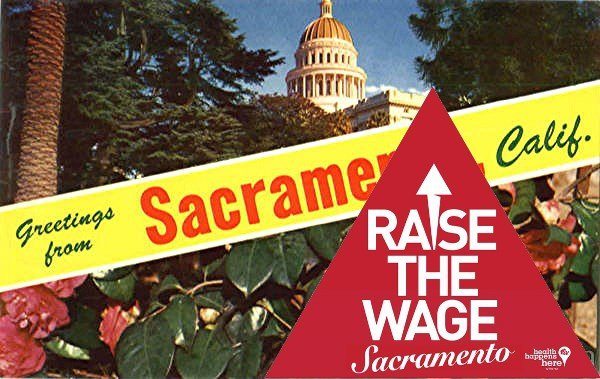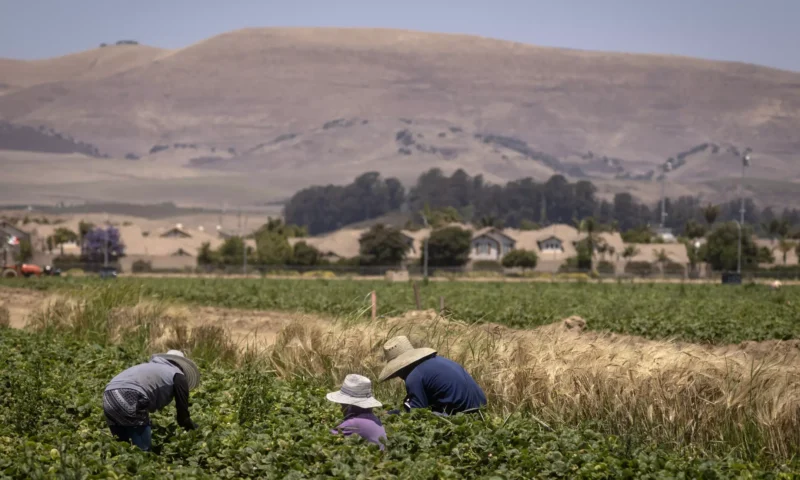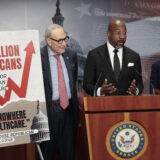Labor & Economy
Sacramento’s Minimum-Wage Rumble Begins

On December 21, 2015, Organize Sacramento and Raise the Wage Sacramento filed documents with the city clerk to gather 21,503 valid voter signatures necessary to place a minimum-wage measure on this year’s November ballot. The measure would boost the city’s minimum wage to $15 by 2020, peg it to the Consumer Price Index and let workers earn paid sick leave.
Two months earlier the city council, on a 6-3 vote, had approved a minimum-wage ordinance bump to $12.50 by 2020. For Organize Sacramento and Raise the Wage Sacramento, though, that was too low and slow, spurring the current ballot drive for a $15 minimum wage. The Democratic Party of Sacramento County, Restaurant Opportunities Center United , Capital Region Organizing Project and Center for Workers’ Rights also back the measure.
Sacramento’s city attorney will deliver a title and summary for the $15 minimum-wage measure by January 5, Tamie Dramer, chair of Raise the Wage Sacramento, told Capital & Main. Dramer expects support to grow once the title and summary are published in a local paper. Signature-gathering is the next step. The campaign currently has 20 signature-gatherers, paid and volunteer, according to Dramer. There will be a heavy reliance on volunteers, she added.
“The work of gathering the signatures is the biggest obstacle to reaching our goal,” Dramer said. Proponents of the citywide $15 minimum wage will have 180 days to gather and submit the signatures for verification.
Presumably, city residents standing to benefit from the measure will participate in this process. There are 85,000 minimum-wage workers in the capital city, according to outgoing Mayor Kevin Johnson, a second-term Democrat.
Fabrizio Sasso, the head of the Sacramento Central Labor Council (SCLC), told Capital & Main by phone that he has not given up on improving the $12.50 minimum-wage ordinance.
“Two weeks ago I wrote a letter to the city attorney,” he said, “and copied the city council and city manager, to address some issues in the final version of the minimum-wage ordinance — a conversation we are going to continue to have.”
One issue is the ordinance’s granting nonprofit groups and businesses with fewer than 100 employees a schedule for minimum-wage increases that lags a year behind the incremental pay hikes.
According to Sasso, who arrived in Sacramento last year from the national Fight for $15 campaign to raise the minimum wage, the SCLC board will discuss backing the citywide $15 minimum wage measure.
“We most likely will endorse it,” he said, “but have to take into consideration a number of ballot initiatives in 2016, and our resources.”
To complicate matters, a statewide measure for the November 2016 ballot to raise California’s minimum wage to $15 in 2021 is also in the signature-gathering process. (California’s minimum wage rose from $9 an hour to $10, effective January 1.)
Josh Wood, the chief executive officer of Region Business, opposes a $15 minimum wage in 2020. “It’s a job-killer,” he told Capital & Main by phone, “and will wall off Sacramento from the surrounding region.”
Region Business is a political advocacy group for commercial building interests, recently rebranded from its name of Region Builders. According to the organization’s website, “It’s [sic] mission is advancing regional economic growth.”
Region Business will move forward with a “petition withdrawal and voter education campaign” against the $15 minimum wage, Wood said. As proponents gather signatures to qualify this measure for the November ballot, Region Business will attempt “to convince people who intend to sign not to, and those who have signed to remove their names from the petition.”
Dramer views Wood’s group as an advocate for an agenda that benefits the capital area’s well-heeled.
“Region Business is willing to spend thousands of dollars donated by the richest people in Sacramento to maintain the status quo of stagnant wages for a vast majority of workers,” Dramer said.
Recent federal data on household income before and after the Great Recession show that working families’ household incomes are falling, not stagnating.
In Sacramento’s four-county region, the upper 20 percent of households increased their inflation-adjusted income by 1.4 percent in 2007-2014, according to the U.S. Census Bureau. In contrast, the bottom 80 percent of the Sacramento region’s households lost income in the same seven-year span. The poorest 20 percent of households lost the largest amount of income, 27 percent.

-

 Latest NewsDecember 8, 2025
Latest NewsDecember 8, 2025This L.A. Museum Is Standing Up to Trump’s Whitewashing, Vowing to ‘Scrub Nothing’
-

 Latest NewsDecember 10, 2025
Latest NewsDecember 10, 2025Capital & Main, L.A. Times Win Sidney Award for Reporting on Child Farmworkers
-

 StrandedDecember 9, 2025
StrandedDecember 9, 2025Giving Up on the Dream: Asylum Seekers Try Other Options in Mexico
-

 Locked OutDecember 16, 2025
Locked OutDecember 16, 2025This Big L.A. Landlord Turned Away People Seeking Section 8 Housing
-

 Column - California UncoveredDecember 12, 2025
Column - California UncoveredDecember 12, 2025They Power the U.S. Economy, But Will Struggle to Afford Health Care
-

 Column - State of InequalityDecember 11, 2025
Column - State of InequalityDecember 11, 2025A Little Place Called Home?
-

 The SlickDecember 19, 2025
The SlickDecember 19, 2025‘The Poor Are in a Very Bad State’: Climate Change Accelerates California’s Cost-of-Living Crisis
-

 Locked OutDecember 23, 2025
Locked OutDecember 23, 2025Section 8 Housing Assistance in Jeopardy From Proposed Cuts and Restrictions

